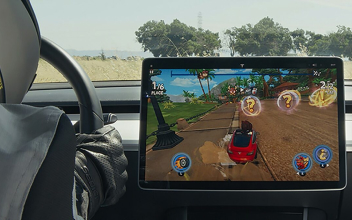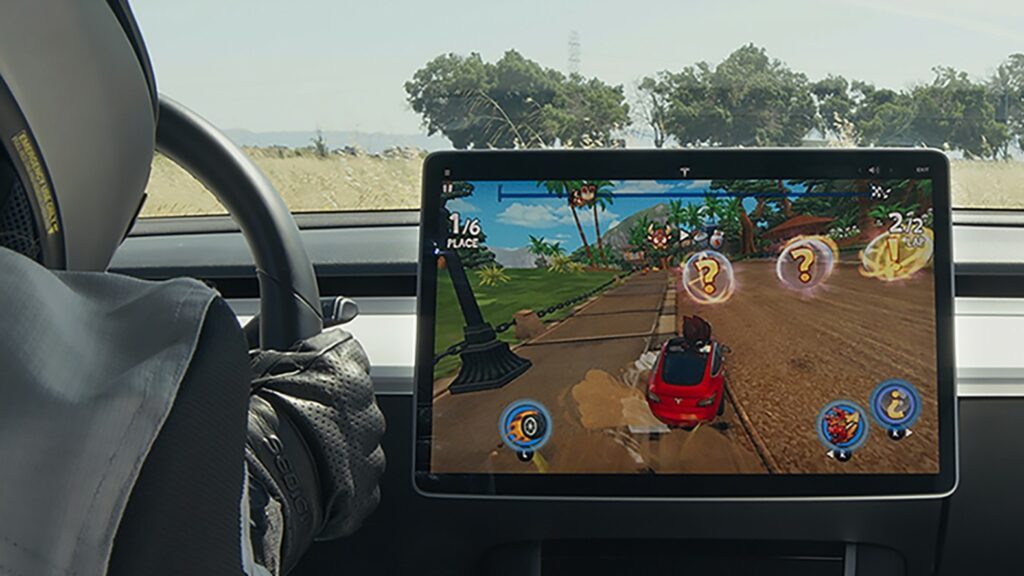Electric vehicles have been around for over a decade. What started as a cool, environmentally friendly alternative to gas-powered internal combustion vehicles is slowly becoming the car of the future. And the electric vehicle industry successfully integrates gamification into their customer engagement processes, they are going to change what a car is and what it can do for the owner.
While many established car manufacturers were initially reluctant to abandon their competitive advantage in internal combustion vehicles, they have all had to acquiesce to the public’s demands for electric vehicles. Electric vehicles are more eco-friendly vehicles that reduce emissions and thus reduce the automotive industry’s impact on climate change.
As a result, every prominent car manufacturer today, from VW, Ford, Toyota to Mercedes, has a line of eco-friendly electric vehicles. It is not a stretch to say that electric vehicle technology has become the new arena for competition and brand differentiation in the automotive industry.
How long can it go on a single charge? How affordable is the electric vehicle? How long does it take to charge the batteries to full capacity? What other amenities and conveniences does it offer beyond the electric drive functionality? These are the questions that keep car manufacturers up at night today.
Furthermore, with gamification, electric vehicles are also setting new standards for engagement and enjoyment for their owners. Gone are the days of cars as utility tools. Gamification makes electric vehicles fun to own while also making the owners a part of a larger community of environmentally conscious citizens of planet Earth.
Why have electric vehicles become so successful?
The current success enjoyed by the electric vehicle industry has come as a surprise to many, including the car manufacturers themselves. While the industry’s initial selling point was their lack of emissions which made them better for the environment, it is safe to say that the electric vehicles owe their success to more than their impact on the environment.
The development of new battery technology that allowed them to go further on a single charge was one of the main reasons and the reduction in price points as the car manufacturers learned how to make them cheaper and yet better.
Furthermore, their seamless integration with IoT technology also boosted their reputation. They helped cars evolve from mechanical hunks of metal to technology platforms, something we will detail later.
However, as great as electric cars are doing, many industry experts believe that the adoption of electric vehicles is likely to plateau unless they find a way to make driving more engaging and rewarding for the driver. That is why many believe that gamification could not come soon enough to the electric vehicle industry.
It is believed that large-scale integration with gamification technology will make electric vehicles more engaging to drive and will do away with the tedious, repetitive task that is driving.
Why the electric vehicle industry needs gamification
There are various reasons why the electric vehicle industry needs gamification, with the first being the example given above;
Driving electric vehicles is boring
Not so long ago, driving and owning a car used to be a passion for some people. Many men and women took great pride in what they drove and how well they knew the cars they drove. Car hobbyists were real, evidenced by all the drivers’ clubs in the world. In addition, men used to work on their vehicles themselves as a hobby and pastime.
Fast forward to today, where cars are functional pieces of equipment used primarily to get one from location A to B. Car owners don’t know anything about the cars they own, since they are no longer works of art or even hobbies.
Electric cars are even less engaging since drivers have to do next to nothing to move them from A to B, especially with the emergence of self-driving technology. Also, electric car owners don’t have to be aware of when to change their oil, tires, and anything like that since the vehicle will tell you and your maintenance service provider when the car needs to be serviced and updated. In fact, in some EVs like Tesla, the car simply has to download a software update overnight.
All this has contributed to the boredom that is driving electric vehicles. However, all that can change with gamification. With gamification, new user journeys can be created for drivers to replace the romance that has been lost with car ownership. Drivers can look forward to new ways of being engaged, which could change the experience of owning and driving a car altogether.
Cars are now platforms to provide mobility services to drivers.
In the past, car manufacturers had only two contact points with their customers. The first was when the customer showed up at the showroom to purchase the car. The second was the post-sale maintenance check offered with the purchase of everything vehicle. Finally, if the manufacturer made some significant errors in the design and production of a specific, then a third contact point emerged as cars would be recalled en mass by the manufacturer.
However, with electric vehicles and their robust integration with IoT technology, cars are now marketplaces for manufacturers and other service providers to sell products and services to car owners. For instance, Apple’s CarPlay and Google’s Android Auto make it easier for smartphone applications to interface with electric vehicles. As a result, anything you can purchase on your smartphone, like music, you can purchase directly with your car.
Car manufacturers can also communicate directly and regularly with owners, giving them recommendations for where to charge, how to drive for maximum efficiency, where to get the car washed or serviced and many more.
These kinds of services make cars continuous revenue generators for manufacturers as opposed to one-time sources of revenue. However, in order for the car as a marketplace to take off, manufacturers and service providers require high levels of engagement from car owners. And as we know, the best way to solicit customer engagement is through gamification.
An excellent example of gamification driving engagement among EV owners is VW’s Boneo, which enables drivers to collect points for completing daily tasks and challenges. The VW owners can redeem these points for anything in the marketplace, including car service, car washes and even tickets to see their favorite artists in concert. As a result, Boneo has taken driver engagement with the manufacturer and the marketplace through the roof, offering a template for other EV manufacturers to follow.
However, as far as EVs have come with gamification and driver engagement, there is still much room to improve. But to do so, EV manufacturers have to be willing to re-imagine the concept of the car and tailor it to the needs of the modern-day EV owner.
What needs to change in the design of the new electric vehicles to increase engagement?
Design EVs with engaging user journeys
For the most part, EVs have been designed to resemble the old internal combustion vehicles in appearance, function and user journeys. However, EVs represent a new opportunity for car manufacturers to re-imagine what a car is and what it is capable of doing.
There is a famous quote attributed to Henry Ford regarding the invention of the car. He said, “If I asked people what they wanted, they would have said faster horses.” The point of this quote (regardless of whether he actually said it or not) is to point out the limitations of consumers when it comes to designing solutions for their problems.
This is where human-focused design can bridge the gap between the consumer and the manufacturer. EV manufacturers have to design cars around the modern needs of their customers.
For instance, with self-driving and assisted driving technology taking off, what will the occupants of the modern-day EV do when they no longer have to pay attention to the road and actually drive the car?
Perhaps the car can evolve into a social place for quality time and engagement with friends and family. Or maybe it can become a productive space for work, acting as an extension of the workplace. But, regardless of how they evolve, one thing is certain: EVs will have to evolve to usher in a new, more engaging culture for drivers. Otherwise, they will become glorified Ubers.
Leverage the Octalysis Group’s framework for human motivation
To motivate humans into engaging with anything, whether it is a game, a brand or a product, one has to leverage the eight core drives of motivation, as described in the Octalysis framework. EVs are not exempt from this rule. Car owners have to be motivated to want to engage with your EV and all its various functions and services.
EVs, by default, appeal to many owners’ sense of purpose and epic meaning (Core Drive 1) by being better for the environment than fuel-powered cars. EV owners feel like they are doing right by the environment by driving them, but this is more symbolic than impactful.
However, with gamification, the EV industry can satisfy other core drives of motivation for their owners in the following ways;
With the integration with IoT, EV owners can do much more with their vehicles than the owners of fuel-powered cars can. This gives EV owners a sense of empowerment, satisfying Core Drive 3 in the Octalysis Framework.
With gamification, like in the case of VW’s Boneo and BMW’s Points Program, EV owners belong to communities and networks with other EV owners of similar brands and participate in community activities and challenges. This strong sense of community fulfills Core Drive 5 of the Octalysis Framework, as owners can exert a certain level of social influence over the community and manifest a sense of belonging and community.
Finally, gamification also allows EV owners to compete in daily challenges, tasks and activities that give real-world rewards, thus fulfilling Core Drive 7, unpredictability. Should an EV brand manage to satisfy all the above Core Drives of human motivation for their customers, they will achieve levels of engagement with the brand previously thought impossible for car owners.
Are you interested in integrating business gamification with your EV brand to maximize consumer engagement and open up new interaction and secondary transactions opportunities? Contact us today for a free consultation.





